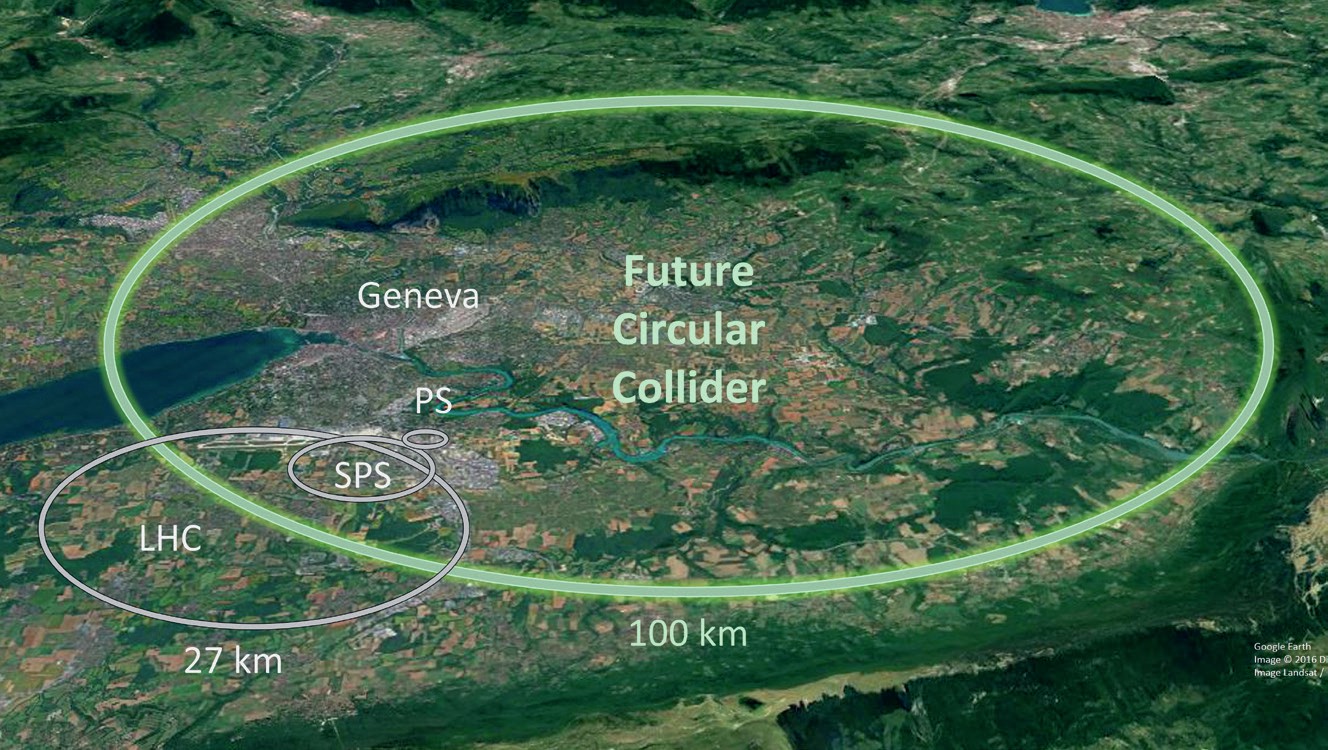
In 2020 preliminary plans were approved to build a new supercollider at CERN, the European particle physics laboratory. The Future Circular Collider (FCC) will be housed in a new 100km underground circular tunnel (1). The current 27km CERN tunnel, 100m below ground, was made in the 1980s for the Large Electron Positron collider (LEP), which helped establish and refine the Standard Model of particle physics (2). It now contains the Large Hadron Collider (LHC).
Circular colliders use magnetic fields to steer and focus beams of charged particles (3). Increasing the collider radius reduces the field needed to steer the particle, and reduces energy losses (4). Superconducting magnets at the forefront of technology are needed to produce the magnetic fields (5, 6).
Your organisation does not have access to this article.
Sign up today to give your students the edge they need to achieve their best grades with subject expertise
Subscribe




